"In a narrow grave, just six by three
We buried him there on the lone prairie"
(an) alternative that is just emerging in Maine is natural burial in a green cemetery: wooded graveyards that ban chemicals and caskets that won't easily decompose.
Two such cemeteries are now preparing to do natural burials in Maine, in Limington and in Orrington. There are only about six operating green cemeteries in the United States, but many more are planned, according to those tracking the trend.
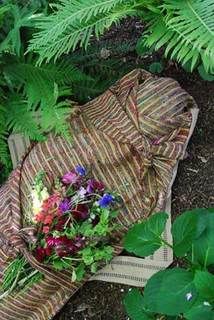 Some organizations and companies active in "natural burial" are Native Woodland, operating in the U.K., the Natural Burial Association (Canada), and Kinkaraco, a San Francisco (U.S.) dealer in "Green Burial Shrouds"(see photograph).
Some organizations and companies active in "natural burial" are Native Woodland, operating in the U.K., the Natural Burial Association (Canada), and Kinkaraco, a San Francisco (U.S.) dealer in "Green Burial Shrouds"(see photograph).Green Burials (U.S.) (motto: "Return Naturally"} has much information regarding newer burial practices.
What is Green Burial?Simple and natural. Green burial, or natural burial, ensure the burial site remains as natural as possible in all respects. Interment of the bodies is done in a bio-degradable casket, shroud, or a favorite blanket. No embalming fluid, no concrete vaults.
The Natural Burial Company (U.K.) sells biodegradable caskets made of recycled paper, sea grass or bamboo. Their willow casket illustrated:
On Caring for Your Own Dead web site we find much information about the old American tradition of home burial and the laws of various states regarding this practice today.
The laws in Connecticut are in conflict with each other, begging for a law suit. The laws specifically provide that the custody and contol of remains . . . shall belong to the surviving spouse . . . or . . . next of kin . . . [Sec. 45-253]. On the other hand, a funeral director's signature is required on the death certificate, and only a funeral director or embalmer may "remove the body of a deceased person from one town to another" when a person dies in Connecticut, but towns and ecclesiastical societies may provide a hearse and pall for burial of the dead. Go figure. A licensed embalmer must be in charge when death is from a communicable disease. Because the laws are conflicting in this state, a family wishing to care for its own dead may wish to seek the help of legal counsel. The FCA office may be able to help by filing a friend of the court brief.
While in Massachusetts:
In 1996, the Memorial Society here convinced the State Board of Health that Commonwealth laws permitted families to care for their own dead. It was left to the discretion of the individual boards of health whether or not to comply with the state's opinion. Although many towns have agreed to do so, a court case will be pursued if difficulty arises. Personnel in the Department of Health have been very helpful with recalcitrant local officers.
In Michigan:
A 1995 court decision affirmed a family's right to possess a body "for the purpose of preparation, mourning and burial." This state also has one of the best home burial statutes. Families wishing to care for their own dead in this state may run into officials who are not aware of the court case.
Returning to the Portland Herald Press story:
Klara Tammany's mother didn't want a typical American funeral. No embalming, no metal casket, not even a funeral home.
When she died after a long illness a couple of years ago, family members and friends washed and dressed her body and put it in a homemade wooden casket, which was laid across two sawhorses in the dining room of her condo in Brunswick.
Then, for two days, friends and family visited, brought cut flowers, wrote messages on the casket's lid and said goodbye.
"We had this wake, and it was wonderful," Tammany said.
The home funeral is part of an emerging trend that some believe will change the way Americans deal with death. Send-offs like the one Tammany planned with her mother are called "green" funerals because they avoid preservative chemicals and steel and concrete tombs, all designed to keep a body from decomposing naturally.
After the wake, Tammany's mother was cremated and her ashes buried near the family's camp in Monmouth.
"It makes no difference, so I've been told
Where the body lies when life grows cold
But grant, I pray, one wish to me
O bury me not on the lone prairie"
I say, "Do bury me on the lone prairie, or better yet, in the warm green woods!
To hear a very folksy version of this traditional song click here
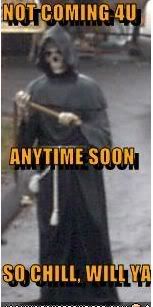




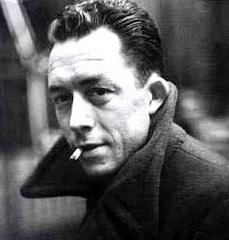


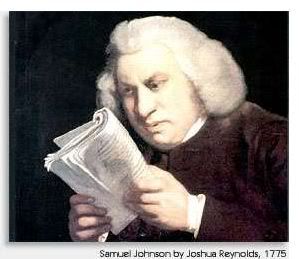


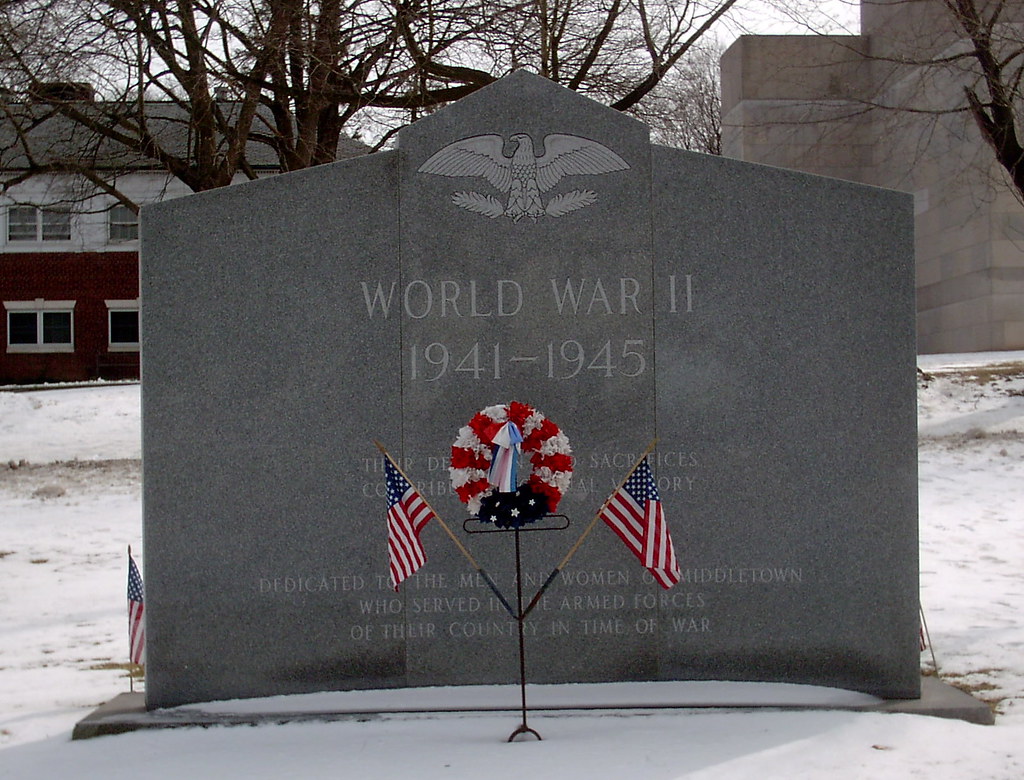




No comments:
Post a Comment